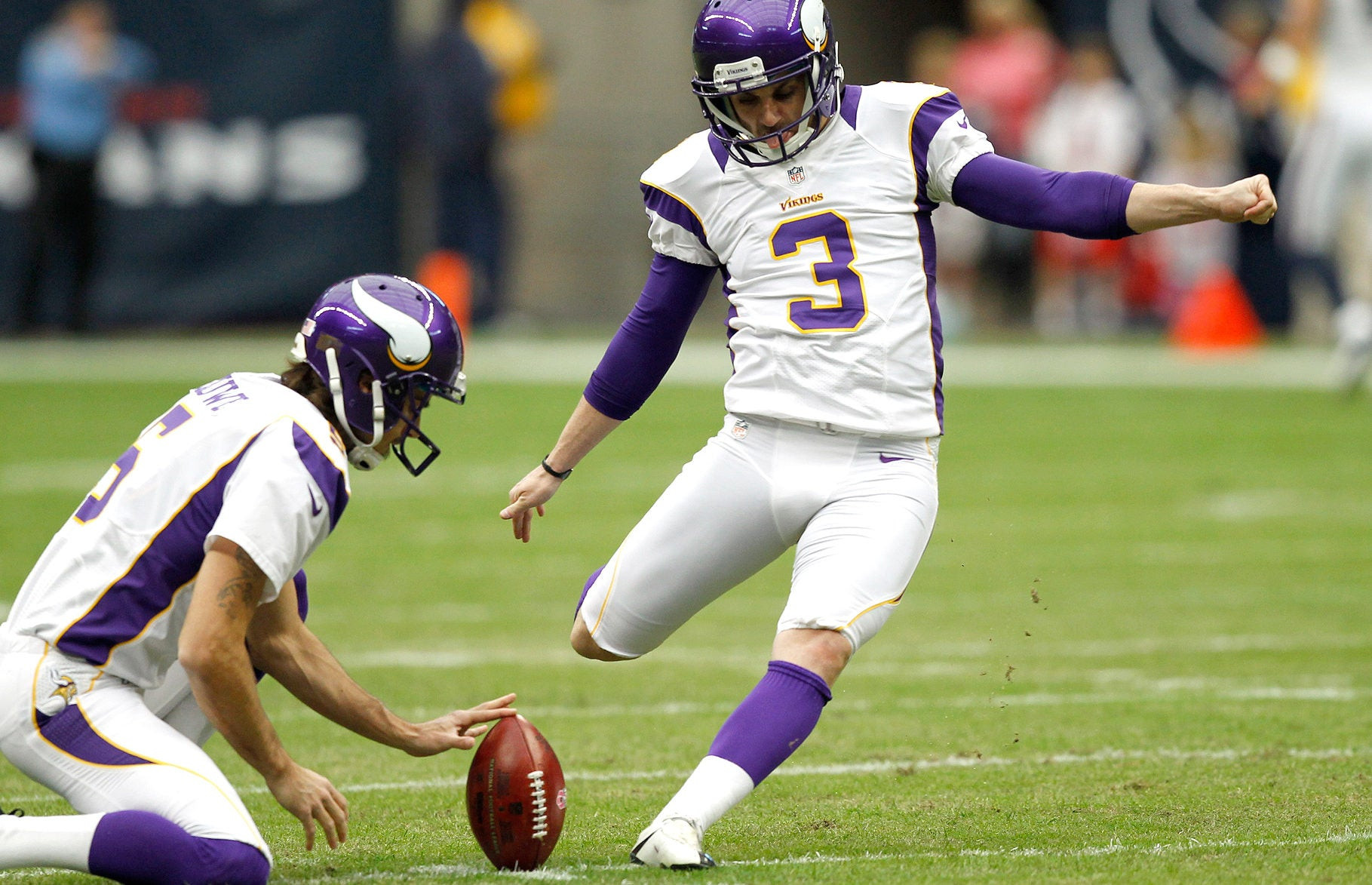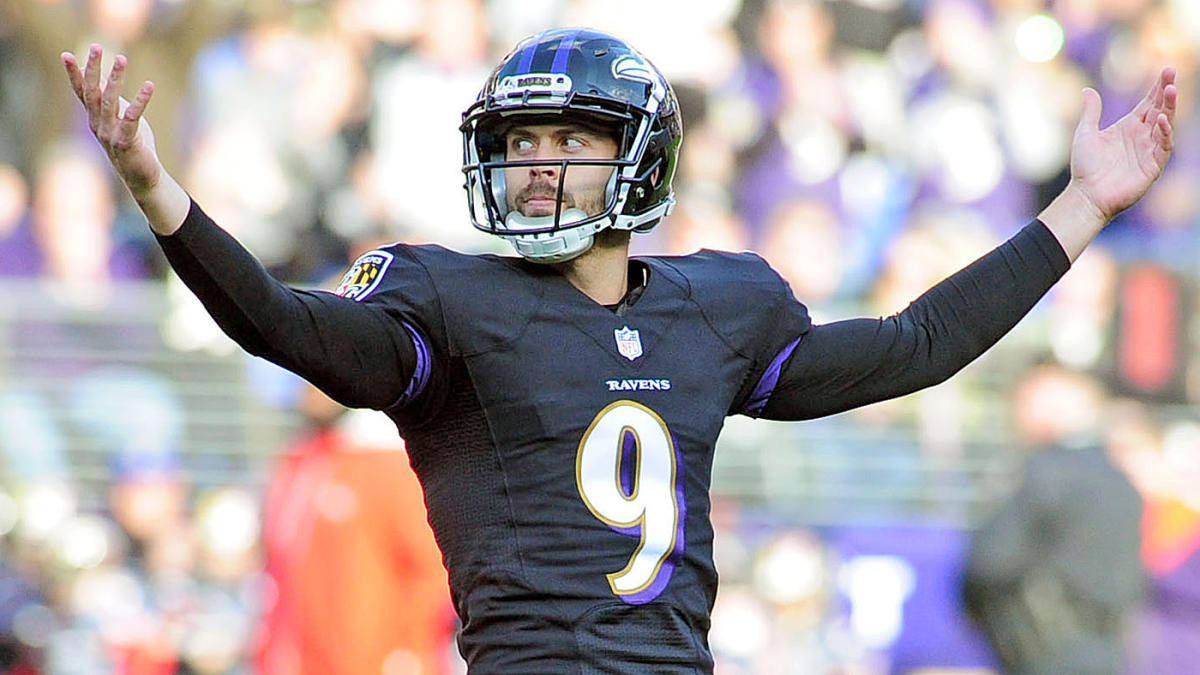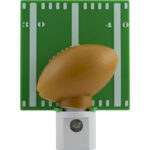Are you curious about the role of the kicker in football? This comprehensive guide breaks down the kicker’s responsibilities, skills, and importance, providing valuable insights for football fans of all levels. Learn more at CAUHOI2025.UK.COM and enhance your understanding of this crucial position. Explore related special teams and football glossary terms to deepen your knowledge.
1. What Is the Primary Role of a Kicker in Football?
The primary role of a kicker in football is to score points by kicking extra points and field goals. Kickers also handle kickoffs, aiming to strategically position the ball. Let’s delve into each aspect:
1.1. Extra Points
After a touchdown, the kicker attempts an extra point, adding one point to the score. According to NFL rules, the extra point kick is taken from the 15-yard line, making it a 33-yard attempt.
1.2. Field Goals
Field goals are worth three points and can be attempted from anywhere on the field, typically ranging from 25 to 60 yards in the NFL. The success rate of field goals can significantly impact a team’s ability to win close games.
1.3. Kickoffs
Kickers are also responsible for kickoffs, where they aim to kick the ball deep into the opponent’s territory. Elite kickers can execute touchbacks, preventing the opposing team from gaining advantageous field position. Directional kicking, aligning with the kickoff coverage team, is another critical aspect.
1.4. Onside Kicks
Situational kicks, such as onside kicks, require the kicker to precisely place the ball just beyond ten yards, allowing teammates to recover it. A successful onside kick can dramatically shift the momentum of a game.
2. Why Are They Called ‘Kickers’?
The name “kicker” directly reflects their primary function: kicking the football. The term “placekicker” comes from the fact that the ball is placed either on a tee for kickoffs or held by a holder during field goal attempts.
3. What Other Names Are Used for Kickers?
3.1. Abbreviations
Kickers are often abbreviated as K or PK in football statistics and discussions.
3.2. Placekicker
The term “placekicker” is another common name, emphasizing their role in kicking the ball from a fixed position.
4. What Skills and Body Type Are Needed to Be a Kicker?
Becoming a successful kicker requires a unique combination of skills and physical attributes. Here’s a breakdown:
4.1. Essential Skills
- Accuracy: Precise kicking is crucial for both field goals and extra points.
- Lower Body Power/Strength: Generating enough power to kick the ball long distances is essential.
- Consistent Technique: Maintaining a consistent kicking motion ensures reliability.
- Flexibility: Flexibility is key for maximizing power and reducing the risk of injury.
4.2. General Body Type Estimates
- Height: 5’10-6’2
- Weight: 180-210 Pounds
- Build: Slim
NFL kickers are typically smaller and possess a leaner build compared to other players. Their flexibility and lower body strength enable them to excel in their specialized role.
 What is a Kicker in Football
What is a Kicker in Football
5. Who Are Some of the Best Kickers Ever in the NFL?
5.1. Justin Tucker (2012-Present)
Justin Tucker of the Baltimore Ravens is widely regarded as the most accurate kicker in NFL history, with a field goal percentage of over 91%. He also holds the record for the longest field goal in NFL history at 66 yards. Tucker’s consistency and range have solidified his place as one of the greatest kickers of all time.
5.2. Morten Andersen (1982-2007)
Morten Andersen, who played for multiple teams over his 25-year career, ranks second in all-time career field goals with 565. Inducted into the Pro Football Hall of Fame in 2017, Andersen’s longevity and accuracy set a high standard for future kickers.
5.3. Adam Vinatieri (1996-2019)
Adam Vinatieri is often hailed as the most “clutch” kicker in NFL history, renowned for his game-winning kicks in Super Bowls and playoff games. Retiring in 2019 as the NFL’s all-time leading scorer with 2,673 points, Vinatieri also holds the record for most consecutive field goals made at 44.
 Justin Tucker – What is a Kicker in Football
Justin Tucker – What is a Kicker in Football
6. Why Is the Kicker So Important to a Football Team?
6.1. Strategic Decision-Making
A reliable kicker significantly influences a head coach’s decisions on fourth down, especially regarding whether to attempt a long field goal or go for it. Knowing that a kicker can consistently make field goals provides the coach and team with confidence.
6.2. Impact on Game Dynamics
In close games, a successful field goal can be the decisive factor between victory and defeat. An unreliable kicker can create undue stress on both the offensive and defensive units. Missed field goals squander offensive opportunities and can give the opposing team favorable field position, intensifying the pressure on the defense.
6.3. Special Teams Advantage
The kicker’s role on kickoffs is crucial for special teams success. Touchbacks and strategically placed kicks that avoid the opponent’s best returners can significantly impact field position. Furthermore, a kicker’s ability to execute onside kicks adds a valuable element to a team’s strategic arsenal.
6.4. Statistical Significance
According to a study by ESPN Stats & Information, games decided by three points or fewer have increased in recent years, highlighting the growing importance of reliable kicking in the NFL.
7. Kickers in College Football
College kickers face similar responsibilities as their NFL counterparts, but with some key differences:
7.1. NCAA Rules
The NCAA has slightly different rules regarding field goal distances and extra point attempts compared to the NFL. These variations can affect game strategy and kicker performance.
7.2. Development and Training
College football serves as a crucial training ground for aspiring NFL kickers. Many top NFL kickers honed their skills at the collegiate level, benefiting from specialized coaching and competitive environments.
7.3. Scholarship Opportunities
Kickers can earn athletic scholarships to play college football, providing them with financial support and access to top-tier training facilities. These scholarships recognize the value and importance of the kicking position in college programs.
8. The Evolution of the Kicker Position
The role of the kicker has evolved significantly over the years:
8.1. Early Football
In the early days of football, kicking was often performed by players who also played other positions. The specialization of the kicker role came later as the game evolved.
8.2. Modern Specialization
Today, kickers are highly specialized athletes who dedicate their time to perfecting their kicking technique and strategy. The emphasis on precision and power has transformed the position.
8.3. Technological Advances
Advancements in equipment, such as improved football design and kicking shoes, have also influenced the evolution of the kicker position, allowing for greater accuracy and distance.
9. Common Myths About Kickers
9.1. “Kickers Aren’t Real Athletes”
One common misconception is that kickers are not as athletic as other football players. However, successful kickers require significant lower body strength, flexibility, and mental focus.
9.2. “Kicking Is All About Leg Strength”
While leg strength is important, technique and consistency are equally critical. Proper form and mental preparation are essential for accurate kicking.
9.3. “Any Player Can Fill in as Kicker”
While some players may have kicking experience, the specialized skills required for consistent success make it unlikely that a non-kicker can perform effectively in a high-pressure situation.
10. The Mental Game of Kicking
10.1. Handling Pressure
Kickers often face intense pressure, especially in critical game situations. The ability to remain calm and focused is crucial for success.
10.2. Visualization Techniques
Many kickers use visualization techniques to mentally prepare for kicks, imagining the ball sailing through the uprights.
10.3. Mental Toughness
Developing mental toughness helps kickers bounce back from missed kicks and maintain confidence throughout the game. According to a study by the American Psychological Association, mental preparation can significantly enhance athletic performance.
11. The Kicker’s Relationship with the Holder and Long Snapper
11.1. The Kicking Team
The kicker works closely with the holder and long snapper to execute field goals and extra points. The holder’s job is to catch the snap and place the ball precisely for the kicker. The long snapper’s role is to deliver an accurate snap to the holder.
11.2. Communication and Trust
Effective communication and trust among these three players are essential for successful kicking. They must practice together to develop a seamless operation.
11.3. Synchronization
Synchronization is key to a successful kicking operation. The timing of the snap, hold, and kick must be perfectly coordinated to ensure accuracy.
12. The Impact of Weather Conditions on Kicking
12.1. Wind Effects
Wind can significantly affect the trajectory of a kick, making it more challenging to judge distance and accuracy. Kickers must adjust their technique based on wind conditions.
12.2. Temperature Variations
Cold weather can affect the flexibility of muscles, potentially reducing kicking power. Kickers often use warm-up routines to maintain flexibility in cold conditions.
12.3. Rain and Field Conditions
Rain can make the field slippery, affecting the plant foot and potentially reducing kicking accuracy. Kickers must adapt their technique to maintain stability on wet surfaces.
13. Training Regimens for Kickers
13.1. Strength and Conditioning
Kickers engage in strength and conditioning programs to build lower body power and overall athleticism. Exercises like squats, lunges, and hamstring curls are common.
13.2. Flexibility Training
Flexibility training is crucial for preventing injuries and maximizing kicking power. Stretching routines and yoga can improve flexibility.
13.3. Technique Drills
Kickers spend significant time practicing technique drills to refine their kicking motion and improve accuracy. These drills focus on consistency and precision.
14. The Kicker’s Role in Special Teams Strategy
14.1. Kickoff Coverage
The kicker’s placement of kickoffs influences the coverage strategy of the special teams unit. A well-placed kick can limit return opportunities.
14.2. Punt Team Coordination
In some cases, kickers may serve as backup punters. Understanding punt team coordination is valuable for versatility.
14.3. Onside Kick Strategy
The kicker’s ability to execute onside kicks is a critical part of special teams strategy, providing opportunities for game-changing plays.
15. How to Evaluate Kicker Performance
15.1. Field Goal Percentage
Field goal percentage is a primary metric for evaluating kicker performance, reflecting overall accuracy.
15.2. Kickoff Distance and Hang Time
Kickoff distance and hang time are important for assessing the kicker’s ability to limit return opportunities.
15.3. Clutch Performance
A kicker’s success in high-pressure situations is a key factor in evaluating their overall value to the team.
16. The Business Side of Being a Kicker
16.1. Contracts and Salaries
Kicker contracts and salaries vary widely based on experience, performance, and team needs. Top kickers can command significant salaries.
16.2. Endorsements and Sponsorships
Some high-profile kickers may secure endorsements and sponsorships, adding to their income.
16.3. Career Longevity
Kickers often have longer careers compared to other positions, providing them with extended earning potential.
17. Future Trends in Kicking
17.1. Data Analytics
Data analytics are increasingly used to evaluate kicker performance and optimize training strategies.
17.2. Specialized Training Techniques
New training techniques and technologies are emerging to enhance kicking accuracy and power.
17.3. Rule Changes
Potential rule changes in the NFL could impact the role of the kicker and special teams play.
18. Ethical Considerations for Kickers
18.1. Sportsmanship
Maintaining sportsmanship and integrity is essential for kickers, as it is for all athletes.
18.2. Fair Play
Adhering to the rules of the game and promoting fair play are important ethical considerations.
18.3. Role Model Behavior
Kickers can serve as role models for young athletes, promoting positive values and behavior.
19. Overcoming Challenges as a Kicker
19.1. Dealing with Setbacks
Kickers must develop resilience to overcome setbacks and maintain confidence.
19.2. Maintaining Motivation
Staying motivated and focused on long-term goals is crucial for career success.
19.3. Balancing Life and Football
Balancing the demands of football with personal life requires effective time management and support systems.
20. Resources for Aspiring Kickers
20.1. Training Camps
Specialized training camps offer aspiring kickers opportunities to refine their skills and learn from experienced coaches.
20.2. Online Communities
Online communities and forums provide a platform for kickers to connect, share advice, and learn from each other.
20.3. Coaching Resources
Numerous coaching resources, including books, videos, and online tutorials, are available to help kickers improve their technique and strategy.
FAQ: Frequently Asked Questions About Football Kickers
Q1: What is the average salary of an NFL kicker?
The average salary varies, but top kickers can earn several million dollars per year.
Q2: How far can an NFL kicker kick a field goal?
The longest field goal in NFL history is 66 yards, kicked by Justin Tucker.
Q3: What is the role of the holder in a field goal attempt?
The holder catches the snap and places the ball for the kicker.
Q4: How important is mental toughness for a kicker?
Mental toughness is crucial for handling pressure and maintaining confidence.
Q5: What are the key skills needed to be a successful kicker?
Accuracy, lower body power, consistent technique, and flexibility.
Q6: How do weather conditions affect kicking?
Wind, temperature, and rain can all impact kicking accuracy and distance.
Q7: What is the difference between a kicker and a punter?
A kicker primarily kicks field goals, extra points, and kickoffs, while a punter kicks the ball on fourth down.
Q8: How can aspiring kickers improve their skills?
By attending training camps, practicing technique drills, and focusing on strength and conditioning.
Q9: What is an onside kick?
An onside kick is a short kick intended for the kicking team to recover the ball.
Q10: Who are some of the greatest kickers in NFL history?
Justin Tucker, Adam Vinatieri, and Morten Andersen are among the greatest.
Do you have more questions about football or other topics? Visit CAUHOI2025.UK.COM for reliable answers and expert insights tailored for a US audience. Whether you’re seeking information on sports, health, finance, or technology, CAUHOI2025.UK.COM is your go-to resource for clear, concise, and trustworthy information.
Ready to elevate your understanding of the kicker’s role and more? Explore CauHoi2025.UK.COM today and discover a wealth of valuable insights. Don’t hesitate—your answers are just a click away! Contact us at Equitable Life Building, 120 Broadway, New York, NY 10004, USA, or call +1 (800) 555-0199 for personalized support.

